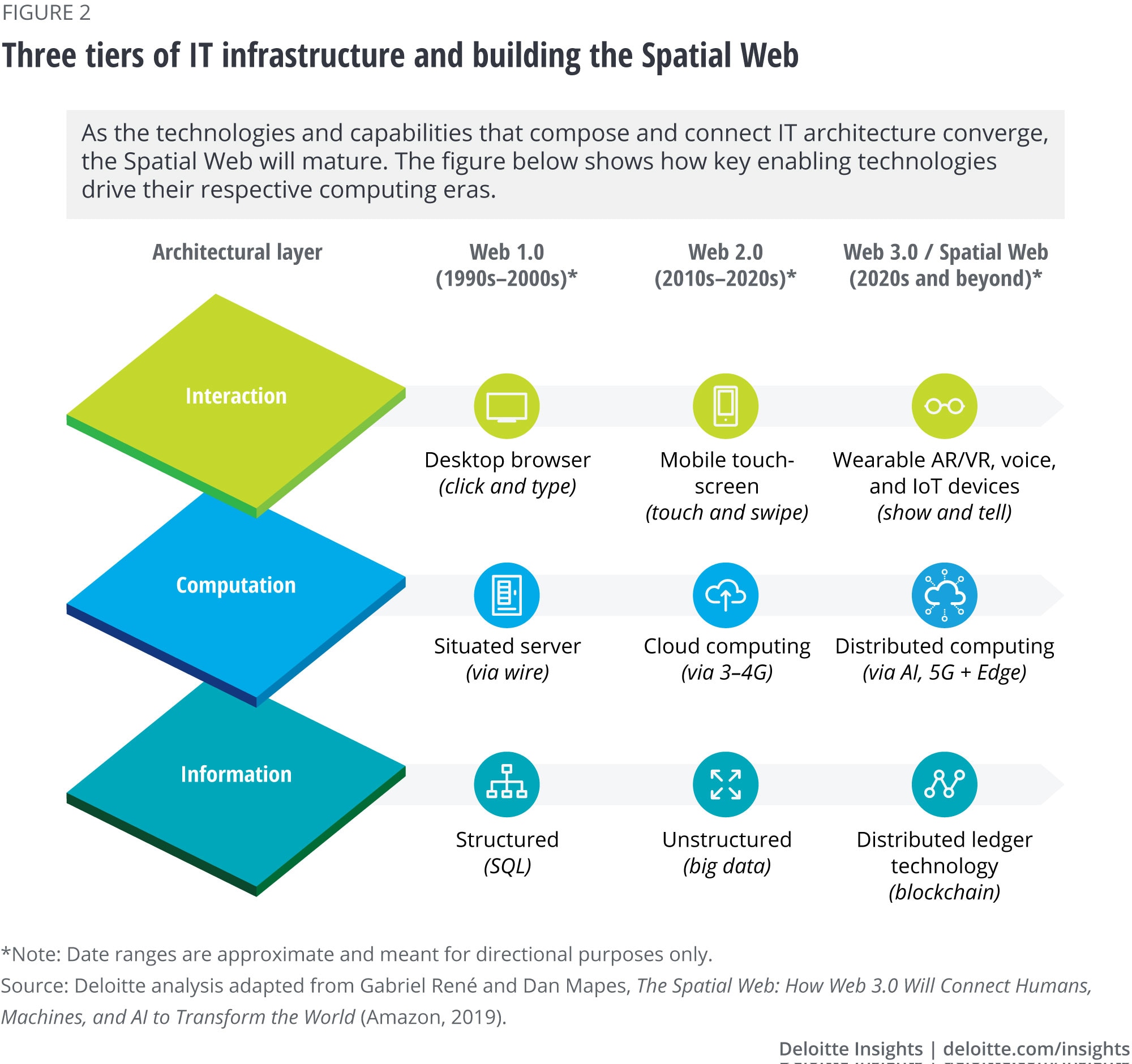- Get link
- X
- Other Apps
The Spatial Web and Web 3.0
AR/VR devices are expected to be a primary gateway for humans to access the Spatial Web, although form factor may eventually range from AR glasses or digital contact lenses to haptic wearables, IoT devices, sensors, robots, autonomous vehicles, and beyond. For the Spatial Web to become widely adopted, AR interfaces in particular will need to become more affordable and comfortable to wear for long periods of time.
In recent years, significant investments have occurred in this area. Traditional incumbents, such as Google,15 are continuing to develop and evolve AR hardware. Facebook—an active participant in the VR space since its US$2 billion acquisition of Oculus VR in 2014—has recently made a slew of investments focused on AR and the AR Cloud, including a project called Live Maps that will reportedly create shared 3D maps of the world.16 Apple17 has been developing its own light-weight AR glasses and has applied for a series of patents that could significantly reduce the size of such AR devices.18
- Get link
- X
- Other Apps

Comments
Post a Comment